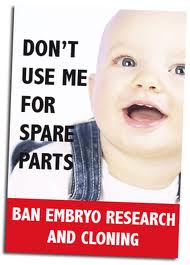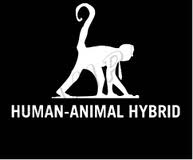Full Debate on the Animals (Scientific Procedures) Act 1986 Amendment Regulations, 2012, may be read at:
http://www.publications.parliament.uk/pa/ld201213/ldhansrd/text/121213-gc0001.htm#12121339000271


Lord Alton of Liverpool: My Lords, as the noble Lord, Lord Taylor of Holbeach, has told us, these draft regulations are intended to tighten the regulations on the use of animals in scientific research in the less well regulated European Union countries, particularly to improve animal welfare. I declare an interest as I serve on my university’s ethics committee, which oversees any Home Office licences required for such research, which, I might add, is undertaken for all the ethical reasons described by the noble Lord, Lord Winston.
Let me begin by welcoming the tightening of animal welfare legislation that the EU directive requires. I also welcome the instances of more stringent protection of animals in these regulations than is required by the EU directive, particularly the retention of the UK special protection for cats, dogs and horses; I find it surprising that that is not required in the directive.
Before turning to my concerns, perhaps I may pick up on a point mentioned by the Minister when he talked about three ‘Rs’- replace, reduce and refine.
13 Dec 2012 : Column GC385
Perhaps when he comes to respond, he will amplify slightly on the question of replacement and to tell us what it is that he thinks that animals, such as the rodents described by the noble Lord, Lord Winston, should be replaced with. The Committee will not be surprised to know that I am particularly concerned about the use of human embryos.
During the proceedings on the Human Fertilisation and Embryology Act 2008, the noble Lord, Lord Hunt of Kings Heath, who spoke several times during those proceedings, made abundantly clear what became known in shorthand as the Hunt test. If alternatives existed to the use of human embryos, they should always be used. There is potential here for conflict: if they were to be used for replacement for animals, how does that accord with the so-called Hunt test that was used during those proceedings.
My concerns in this legislation to improve animal welfare centre on the importance of ensuring that other areas of legislation therefore do not suffer. There are a number of major concerns about this on which I will ask the Minister for reassurance. I return to some of the questions raised during the passage of the HFE Act, and in subsequent Questions I asked of the noble Earl, Lord Howe, on 20 July 2011. In a Written Answer he confirmed that some 3.1 million human embryos had been created since the passage of the 1990 legislation, and that 1.4 million of those had been discarded. To put it another way, for every baby born by IVF, 30 human embryos are destroyed. In a further reply that day, the noble Earl said that 150 animal/human hybrids had been created over the three years up to July 2011; that is obviously the question that I will centre on in my remarks today. I will also partly focus on replacement, which I referred to. I hope that as he comes to reply today, the noble Lord, Lord Taylor of Holbeach, will be able to tell us what the numbers of animal/human hybrids created in the United Kingdom have been since that was authorised; and also the total number of human embryos that have been destroyed or experimented upon since the passage of the 1990 legislation.
2.45 pm
When the directive which it is the purpose of the legislation before us today to transpose into UK law was passing through the European institutions, serious concerns were expressed that the effect of the directive would be to create an imperative for researchers to conduct experiments on human embryos or human embryonic stems cells rather than animals. I would be grateful if the Minister could therefore provide me with an absolute assurance that this will not be the effect of these regulations. If this were the case, it would constitute a huge departure from the current approach outlined by the former Parliamentary Under-Secretary of State for Health, the noble Lord, Lord Hunt of Kings Heath, when he said that it would be illicit to conduct experiments on human embryonic stems cells when alternatives exist. It would raise huge and deeply concerning questions about the nature of our society if it were to afford lesser protection to human embryos and human embryonic stem cells than to animals. I sometimes jest that perhaps when a
13 Dec 2012 : Column GC386
fox arrives at St Stephen’s Entrance holding a placard saying, “Save the human race”, we might wake up to some of the paradoxes in a society where, after all, 800 million people are wracked by starvation or despair, living below any rational definition of human decency. However, there is a link between these questions of what we do to animals and what we do to human beings. CS Lewis writing passionately against vivisection, said:
“If you begin by being cruel to animals, you will end up being cruel to human beings as well”.
I turn to the licensing of research projects involving interspecies animal/human hybrids and chimeras which may be affected by these regulations. The regulations raise serious concerns regarding the ethical oversight and scrutiny of controversial research involving the creation of such hybrids and chimeras, since the regulations appear to unnecessarily remove some of the existing provision for ethical scrutiny in this area.
Before I detail the alternations in the various levels of ethical oversight and scrutiny that will be brought in by these regulations, in order to communicate the seriousness of any reduction in ethnical scrutiny I will briefly explain why there is such a concern. In some cases it will be clear whether a project licence application to the Home Office involving animal/human chimeras should be regulated under the Human Fertilisation and Embryology Act or under the Animal (Scientific Procedures) Act. However, there are many projects involving animal/human chimeras which may need specialist scrutiny to determine whether legally they should be regulated under human legislation or under the far more liberal animal legislation. Provision for this specialist scrutiny and existing ethical review processes has been airbrushed out of the Act by these regulations. The practical implication of this may be that some animal-human chimeric embryos-which should be classified as human admixed embryos and subject to the Human Fertilisation and Embryology Act, and can consequently not be permitted to develop beyond 14 days or to be implanted-could be classified wrongly under the animal legislation and be permitted to develop beyond 14 days and, indeed, to be implanted.
For example, if a chimeric embryo were to be created by a procedure called tetraploid complementation and implanted, it could result in a substantially or entirely human foetus, with an animal placenta, developing in an animal womb. This may seem like science fiction but it has been carried out since the 1990s in animal research and is considered the gold standard test for embryonic stem cells. Indeed, during the passage of the Human Fertilisation and Embryology Bill, on which I spoke on numerous occasions, it was the subject of amendments in both this House and another place. Since such an embryo would have predominantly animal cells at the early embryonic stage, it might seem to fit naturally under regulation by the Animal (Scientific Procedures) Act 1986.
Noble Lords may remember that during the ping-pong stage, the then shadow Health Minister, the noble Earl, Lord Howe, tabled amendments to ensure that such embryos would be classified under the HFE Act and not under animal legislation. My noble friend Lord Walton of Detchant also expressed concern about human-animal embryos created by tetraploid
13 Dec 2012 : Column GC387
complementation and requested assurance that the wording of the Bill specifically covered these chimeric embryos.
The noble Lord, Lord Darzi of Denham, the then Under-Secretary of State for Health, categorically stated that an embryo created by tetraploid complementation would be classified as a “human admixed embryo”, in the catch-all category that the Government added to the Bill, which is now covered in the new Section 4A(6)(e) of the HFE Act 1990. It would therefore be regulated under the HFE Act, would not be permitted to develop beyond 14 days and would not be implanted. As a result of that absolute assurance from the Minister, the amendments tabled by the then shadow Health Minister, the noble Earl, Lord Howe, were withdrawn
However, it appears that the message did not quite get through to the Home Office. In a recent document published on 14 November, in guidelines emanating from the Home Office, the example of tetraploid complementation is given as one where it is “uncertain” whether such an entity should be regulated under the Animal (Scientific Procedures) Act or the Human Fertilisation and Embryology Act. It is not the best example of joined-up government. If this serious error is made with the current level of ethical oversight then it is abundantly clear that project licence applications and decisions under the Animal (Scientific Procedures) Act 1986 need more ethical scrutiny, not less, as appears to be the case in these regulations.
In order to avoid misclassification of animal-human chimeras produced by tetraploid complementation, I hope that the Minister will ensure that the guidelines published on 14 November, Regulations on the Use of Human Material in Animals-A Brief Note for Investigators, are republished with a correction regarding tetraploid complementation. Will the Minister also ensure that it is communicated to the new committee and bodies set up under these regulations that human-animal chimeric embryos made by tetraploid complementation would require a licence from the HFEA under Section 4A(6)(e) of the Human Fertilisation and Embryology Act, as stated in the final ping-pong stages of the HFE Bill by the then Under-Secretary of State for Health, the noble Lord, Lord Darzi of Denham? I cite Lords Hansard of 29 October 2008, col.1624.
Further examples of animal-human chimeras requiring specialist scrutiny would be those where human embryonic stem cells are inserted into an animal embryo and where the human cells may then produce any cell type in the resulting chimera, if implanted, including human brain cells or human gametes-egg and sperm. Various scientific modifications to such an embryo could result, for example, in a substantially human brain. Other concerns have been raised that chimeras might possibly have developed human gametes and might inadvertently be allowed to mate.
Up to now there have been three different levels at which ethical scrutiny of animal-human chimeric project licence applications could take place. I turn to the alterations in these different levels of ethnical scrutiny that will be brought into effect by the regulations before your Lordships today. First, there is the Animal Procedures Committee, an independent body that was set up under Sections 19 and 20 of the Animal (Scientific
13 Dec 2012 : Column GC388
Procedures) Act 1986, which advises the Home Office on matters relating to the Act. Any project licence application concerning ethically contentious issues such as human-animal chimeras are passed on to it for scrutiny.
Home Office guidance states that project licence applications will be referred to this committee if they are,
“applications of any kind raising novel or contentious issues, or giving rise to serious societal concerns (for example, any application involving the genetic modification of non-human primates or embryo aggregation chimaeras involving dissimilar species)”.
However, this committee will no longer exist after 31 December. The regulations will replace it with the Committee for the Protection of Animals Used for Scientific Purposes, whose statutory ethical remit is limited to animal welfare. Specifically, it says:
“The Committee must provide advice to the Secretary of State and the Animal Welfare and Ethical Review Bodies on such matters relating to the acquisition, breeding, accommodation, care and use of protected animals as the Committee may determine or as may be referred to the Committee by the Secretary of State”.
This is very disturbing, since the Animal Procedures Committee has scrutinised the most controversial project applicants. Moreover, the Home Office expressly acknowledges that this amounts to limiting the scope from the Animal Procedures Committee that went before it. Paragraph 167 of its consultation on options for the transposition of European Directive 2010/63 states:
“These functions are in some respects similar to those of the Animal Procedures Committee (APC) set up under ASPA sections 19 and 20 to advise the Secretary of State on matters relating to ASPA and its implementation. They are, however, more narrowly focused on animal welfare issues than is the case with the APC, which also considers wider ethical issues”.
I should therefore like to ask the Minister, after the regulations come into force, what processes will replace the existing ethical scrutiny of controversial project licence applications involving animal-human chimeras that to date have been provided specifically by the Animal Procedures Committee. Who, or what body, will take over this role, if any? Until now another level of ethical scrutiny has been at the level of local ethical review processes, or ERPs. These ERPs function locally, for example at universities. Their functions include scrutinising project applications before they can be submitted to the Home Office. This pre-authorisation procedure may include commenting on ethically controversial project applications. However, the regulations before us establish new animal welfare and ethical review bodies. Despite being called animal welfare and ethical review bodies, their statutory ethical remit is limited to animal welfare. They will apparently replace the existing local ethical review processes, and I would be grateful if the noble Lord will confirm that. That is despite the Home Office consultation of June 2011, in which paragraph 165 highlights concerns in some quarters that adopting the minimal requirements set out in Articles 26 and 27 of the EU Directive for Animal Welfare bodies might,
“result in less extensive ethical and other consideration of scientific procedures”.
Indeed the Government’s response of May 2012 confirmed:
13 Dec 2012 : Column GC389
“The requirements for local Animal Welfare Bodies are less stringent than those relating to the operation of local ethical review processes in the UK”.
It particularly highlighted that,
“Fewer persons are involved (in theory in some places a minimum of two might suffice)”,
and that,
“there are fewer functions (for example no involvement is required in the pre-authorisation phase of project authorisation)”.
Ethical review processes are currently required to review project applications before they are submitted to the Home Office. This is not a role of the animal welfare body under the new regulations. Thus the additional level of ethical scrutiny that has been in place until now will be abolished by these regulations. I therefore ask the Minister why the Government chose to transpose the minimum requirements into law, resulting in less extensive ethical considerations of scientific procedures than hitherto? Who, or what body, will take over the function that the local ethical review processes have had up until now in providing the additional level of ethical scrutiny of controversial research projects before submission to the Home Office? Will this additional level of ethical scrutiny, as it appears from the regulations, be removed?
The third level of ethical oversight has been the Home Office inspectorate. However, those inspectors, under Home Office guidelines, have referred any ethically controversial project applications involving animal-human chimeras that they receive to the Animal Procedures Committee for detailed scrutiny. Noble Lords will have noticed that, as I described, that committee is being abolished by the regulations and will no longer exist after 31 December this year. It will be replaced by the Committee for the Protection of Animals Used for Scientific Purposes, whose statutory remit does not extend to ethical scrutiny of such projects and which will, by the Home Office’s own admission, have a narrowly animal welfare remit.
3 pm
I turn to the question of official guidelines, the need for which has been rendered all the more important because the regulations restrict the ethical remit of the national committee to animal welfare matters. Will the Minister ensure that the department makes a firm commitment to incorporate into official guidelines three things? First, there is the clarification of the boundary between the Human Fertilisation and Embryology Act 2008 and the Animals (Scientific Procedures) Act 1986, as given on 29 October 2008 by the then Under-Secretary of State for Health, the noble Lord, Lord Darzi of Denham. That provides that any embryo that might, even for a short time, be predominantly human, would require a licence from the HFEA. That includes, but is not restricted to, chimeras created by tetraploid complementation; any embryo whose cells might develop, whether fully or partially, a human brain, even though the human cells were less than 50% of the entity; and, thirdly, any other embryo that might develop a predominantly human function.
13 Dec 2012 : Column GC390
Secondly, I hope that the Minister will also take into account categories 2 and 3 of the Academy of Medical Sciences recommendation of June 2011 regarding animals containing human material, calling for specialist scrutiny of certain categories of project application, for example, animal-human chimeras that might have human-like brain functions, that might develop human gametes-eggs and sperm-and for the restriction of the creation of certain animal-human chimeras. Thirdly, I hope that the Government will further consider approving additional recommendations by the Scottish Council on Human Bioethics, which I would be happy to communicate to the Minister, regarding chimeras where human cells could contribute to the germ line or to the brain.
Finally, it is a matter of great urgency that we hear from the noble Lord, Lord Taylor of Holbeach, today what processes will replace the existing ethical scrutiny of controversial project licence applications involving animal-human chimeras which, at this time, have been provided specifically by the Animal Procedures Committee and by the local ethical review processes, but which is not covered by the terms of reference of the new Committee for the Protection of Animals Used for Scientific Purposes and the new animal welfare and ethical review bodies, as set out in the regulations. Moreover, who will decide whether ethically contentious animal-human project applications are granted licences?
It seems odd that in 2012, when there is greater pressure for controversial animal-human projects than was ever the case in 1986, the Government should amend their 1986 legislation, rendering it less capable of robustly dealing with the ethics of this challenge. I know that it has been said that this Government like to adopt a minimalist approach to directive implementation in the interests of preserving our sovereignty, but it seems very odd that we should use the directive as an excuse needlessly to weaken provisions of our sovereignly chosen legislation-legislation that, I might add, was introduced by the Conservative Government.
I hope that the Minister can provide some robust reassurances. If he cannot, I must press him urgently to introduce further amending regulations to ensure that the remits of the Committee for the Protection of Animals Used for Scientific Purposes and animal welfare and ethical review bodies are not narrowly restricted to animal welfare and can properly engage with animal-human combinations, including project applications of any kind raising novel or contentious issues or giving rise to serious societal concerns, including animal embryo aggregation chimeras.
Lord Alton of Liverpool to ask Her Majesty’s Government, further to the Written Answer by Earl Howe on 20 July 2011 (WA 305–6), how many cybrid embryos have been generated with eggs from non-human species in total according to records held by the Human Fertilisation and Embryology Authority (HFEA); and how many other classes of “admixed human” embryos have been generated. HL4175
Lord Alton of Liverpool to ask Her Majesty’s Government, further to the Written Answers by Earl Howe on 20 July 2011 (WA 306) and by Lord Hunt of Kings Heath on 7 November 2002 (WA 145), whether they now collect data on how many human embryos have been (1) created, (2) frozen, (3) destroyed, (4) implanted, and (5) experimented upon, since the passage of the Human Fertilisation and Embryology Act 1990; if so, what are those figures; and, if not, whether they will instruct the Human Fertilisation and Embryology Authority to refine their collection of data so that it provides full disclosure under each of those categories. HL4176
Asked whether the Foreign Secretary intends to take steps to ensure that China’s actions against Uyghurs is recognised as genocide through international courts and by working with international partners, in accordance with his remarks in March 2023, the FCDO trots out their usual evasive circular argument. In Opposition, today’s Ministers voted to change the law on Genocide Determination. They should now stand up to the officials who try to use determination of atrocities as a diplomatic tool rather than honouring the obligations in the Genocide Convention.
Asked whether the Foreign Secretary intends to...

